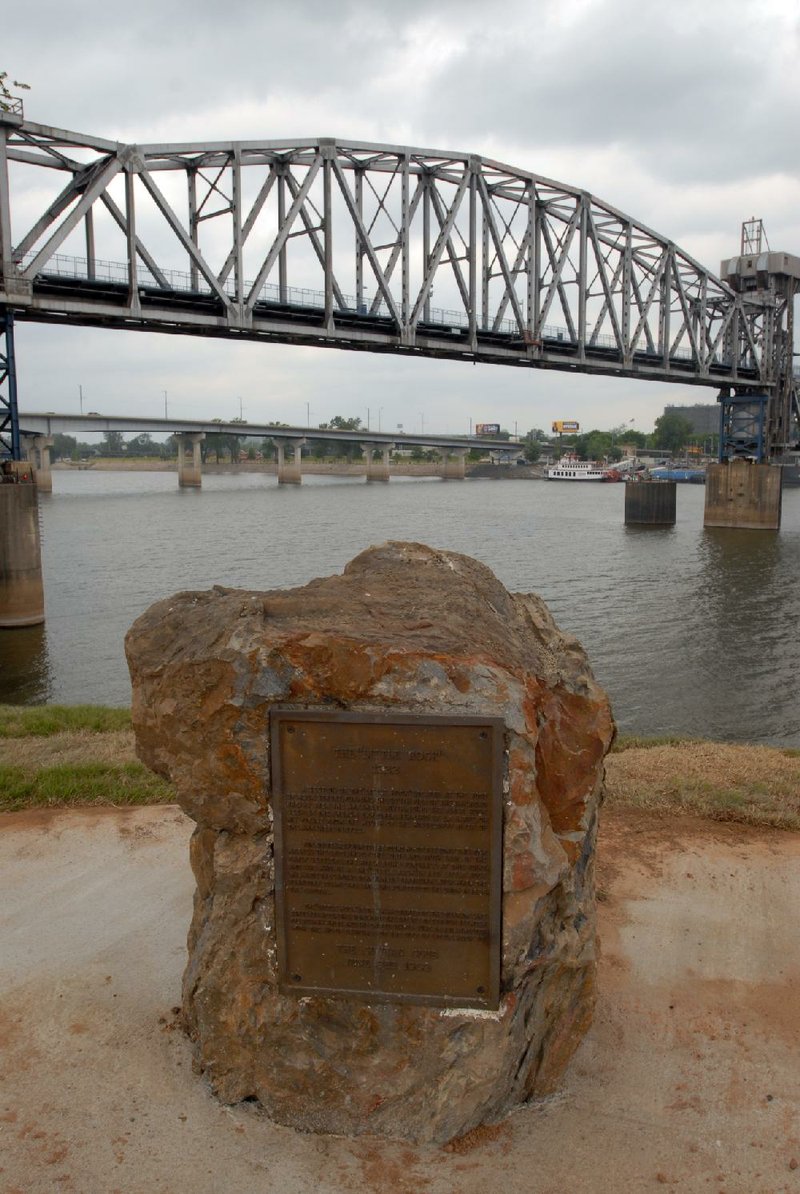Dear Otus,
What's going on down at the river with the "Little Rock"? Last weekend a crew was loading the boulder with the plaque on a flatbed, and the Junction Bridge was shut down for a couple of hours.
-- Bevill B. Schulman,
Little Rock
Dear Bevill,
It was wholly a pleasure to hear from you and to let you know that yours was one of 87 similar emails I received from outraged citizens this week.
That's not entirely accurate. I shouldn't characterize all of them as outraged. Some were merely curious, others were puzzled.
If forced, I'd say maybe a third of those who asked the crew from North Little Rock Parks and Recreation what they were doing were mildly miffed. Several were annoyed; others were vexed. Not a few were confounded or bewildered.
Upon further reflection, only five or six emailers were truly outraged by what was going on, but they were the usual suspects who frequently express their "get-off-my-lawn" curmudgeonly disgruntledness on the Voices page.
You know who they are.
What you witnessed April 11 was the first phase of the official transfer of the "Little Rock," or "La Petite Roche," from the south end of the Junction Bridge to a more convenient, tourist friendly park on the north shore opposite.
What was not readily apparent in the previous set-up was that the boulder you witnessed being moved is not the actual rock, as most presume. It is just a 4,700-pound chunk of the nearby sandstone outcropping that was removed by the Civitan Club in 1932 and installed in front of City Hall on Markham Street.
The informational plaque was added to the boulder at that time. The City Hall location allowed visitors to see an actual piece of the rock without having to venture (in pre-Riverfront Park days) over busy railroad tracks down to the river through a den of ne'er-do-well hobos, boozehounds, working girls and desperate Depression-era toughs.
The plaque explains that the outcropping after which the town was named "formed the south pier of the railroad bridge over the Arkansas River, being the first rock seen by the French explorer, Bernard de la Harpe, on his voyage from the mouth of the Mississippi River up the Arkansas in 1722."
The outcropping, by the way, is only "little" when compared to La Harpe's "French Rock" ("le Rocher Français"), the bluff beneath what is now Fort Roots.
The "Little Rock" marked the best place for early settlers to ford the river, and therefore was a good place to build a railroad bridge.
The bridge is the problem. Its opening construction in 1872 blasted away many tons of the city's namesake. That bridge was never finished. A second bridge in 1884 finished the job, turning the outcropping into a mere shadow of its former self.
Today, one must venture to the edge of the plaza and peer down to see what's left. That is why the Stephens family stepped in to help move the rock (the entire bluff, not just the boulder) to a place where tourists could see it.
It took a while to decide on the best spot. There was space behind the Witt Stephens Jr. Nature Center on the south side, and a more open area near the Dickey-Stephens Park on the north side, or farther east at the Stephens WaterWorld & RV Park opposite the Clinton Library.
Eventually logic prevailed and the outcropping will be carefully excavated, cut into numbered blocks, and moved to a new 3.2-acre park at the north end of the Junction Bridge, where it will be reassembled to mark the northern end of the historic river ford.
The Warren and Harriet Stephens Botanical Garden and Meditation Park will contain the "Little Rock" outcropping within a soaring glass conservatory that will double as the Paula Calhoun Butterfly House.
The outcropping will be set in a large artificial pond to depict its early role as a boat landing. Celebrity landscaper Chris Olsen will arrange the natural foliage to re-create the riverfront in the early 1800s.
As it happens, the new park will be directly to the east of the Warren Amerine and Harriet Calhoun Stephens Arkansas Arts Center, scheduled for completion in 2018. The two facilities should be quite the tourist draw.
North Little Rock Mayor Joe Smith said his city welcomes the "Little Rock." He then noted that they might even rename it "the Argenta Stone." Hopefully, he was kidding.
Until next time, Kalaka reminds you that for the first time since 1980, the Otus column is entirely gluten free.
Disclaimer
Fayetteville-born Otus the Head Cat's award-winning column of humorous fabrication appears every Saturday. Email:
mstorey@arkansasonline.com
HomeStyle on 04/18/2015
